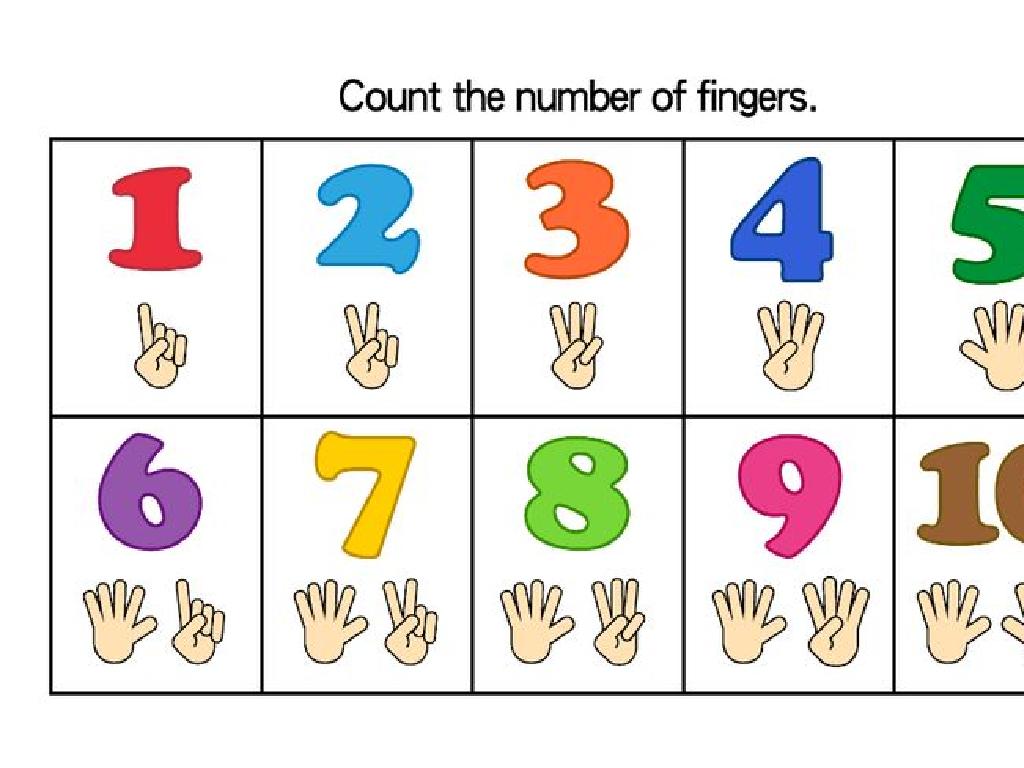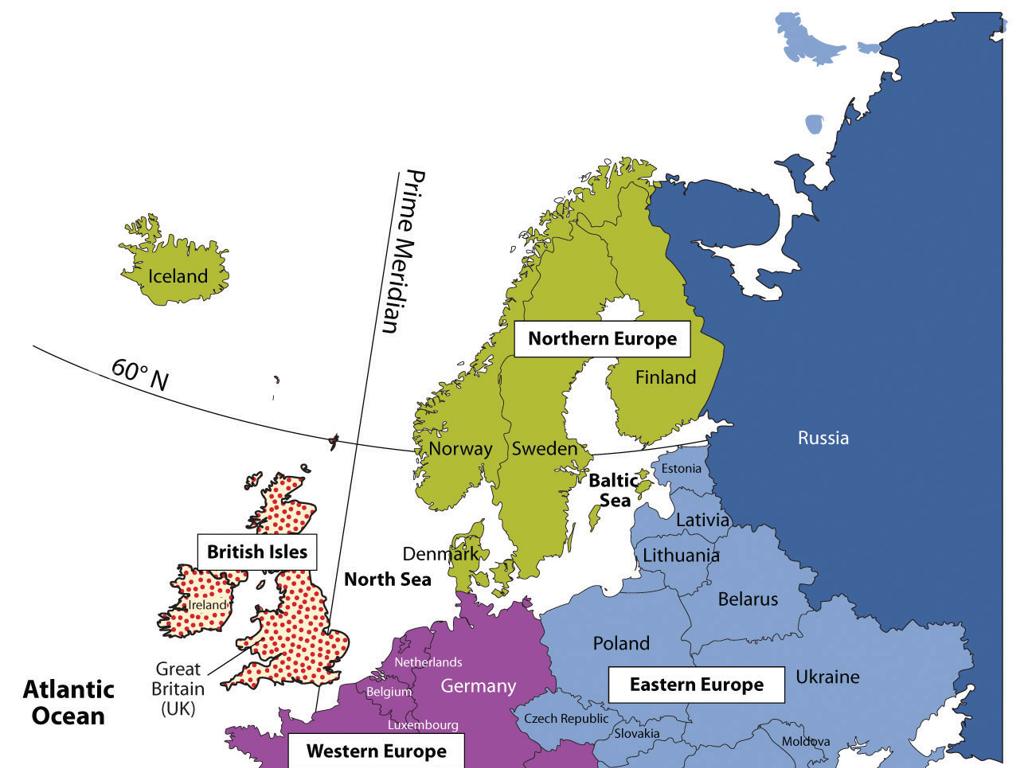Globalization
Subject: Arts and humanities
Grade: High school
Topic: World History Project - 1750 To The Present
Please LOG IN to download the presentation. Access is available to registered users only.
View More Content
Introduction to Globalization
– Exploring our interconnected world
– Defining Globalization
– The process of increased interconnectedness globally
– Globalization in modern history
– A look at how globalization has evolved since the 18th century
– Impact on culture and economy
– Consider how global trade, communication, and cultural exchange have been affected
|
This slide introduces the concept of globalization, aiming to provide students with an understanding of how our world is interconnected. Globalization refers to the process by which nations, economies, and cultures have become integrated through a globe-spanning network of communication and trade. The overview of globalization in modern history should touch upon key events and trends from the 18th century to the present that have contributed to the current state of global interconnectedness. Discuss the impact of globalization on cultural exchanges, economic relationships, and the spread of ideas and technology. Encourage students to think about the pros and cons of globalization and how it affects their daily lives.
The Roots of Globalization
– Early trade routes’ cultural impact
– Silk Road, spice trade influenced food, language, religion.
– Industrialization’s role in globalization
– Mass production, transport tech sped up global trade.
– Colonialism’s effect on global connections
– Colonies linked to empires, reshaping economies, societies.
|
This slide delves into the historical factors that laid the groundwork for modern globalization. Begin with the early trade routes like the Silk Road and the spice trade, which facilitated the exchange of goods, ideas, and culture across continents. Discuss how industrialization introduced new technologies in production and transportation, leading to faster and more efficient global trade. Highlight the role of colonialism in establishing the economic and cultural ties that connected various parts of the world to the colonial empires, often resulting in complex legacies that continue to affect global relations today. Encourage students to think critically about how these historical elements have shaped the interconnected world they live in.
Globalization in the 20th Century
– Impact of World Wars globally
– Wars reshaped borders, economies, and societies worldwide.
– Emergence of multinational corporations
– Corporations expanded, influencing global economy and culture.
– Technological advancements’ role
– Innovations in communication and transport revolutionized interactions.
– Global connectivity enhancement
|
This slide examines the key factors that contributed to globalization in the 20th century. The World Wars had profound effects, redrawing international borders and reshaping global economies and societies. The rise of multinational corporations marked a significant shift in the global economic landscape, with companies operating and influencing markets worldwide. Technological advancements, particularly in communication and transportation, played a crucial role in connecting the world, making it easier and faster to share information and travel. These factors collectively enhanced global connectivity, leading to the highly interconnected world we experience today. Discuss how these elements interplay to create the globalized society and encourage students to think critically about the benefits and challenges of globalization.
Cultural Globalization: A Melting Pot of Traditions
– Cultures influencing each other
– Think sushi’s global popularity or yoga practice worldwide.
– Languages, religions, and practices spread
– English as a global language, spread of Christianity and Islam.
– Globalization in food, music, fashion
– K-pop’s international reach, Italian cuisine worldwide, American jeans in every closet.
– The impact on local cultures
– How does this exchange affect traditional customs?
|
This slide explores the concept of cultural globalization, highlighting the ways in which cultures influence one another and adopt elements from each other. It’s important to discuss the spread of languages and religions, which can often accompany or lead to the spread of cultural practices. Use tangible examples like the international popularity of sushi, the practice of yoga, the global language of English, and the spread of major religions to illustrate these points. Additionally, delve into how cultural globalization manifests in everyday life through food, music, and fashion, using examples such as the worldwide love for K-pop, the ubiquity of Italian food, and the global adoption of American fashion trends like jeans. Encourage students to consider both the positive aspects of cultural exchange and the potential impacts on local traditions and identities.
Economic Globalization: A Global Economy
– Understanding the global market
– Free trade and interconnected economies
– Role of international organizations
– WTO, IMF, World Bank influence on trade and economic policies
– Advantages of a global economy
– Increased market access, innovation, and efficiency
– Challenges of economic globalization
– Economic disparities, dependency, and cultural homogenization
|
This slide aims to introduce students to the concept of economic globalization, focusing on the global market and the role of key international organizations such as the WTO, IMF, and World Bank. Discuss how these organizations shape trade and economic policies worldwide. Highlight the benefits of a global economy, including the expansion of markets, the fostering of innovation, and improvements in efficiency. However, also address the challenges, such as the potential for increased economic disparities between nations, the risk of dependency on global markets, and the impact on local cultures and industries. Encourage students to think critically about these issues and consider both the positive and negative effects of a globally connected economy.
Globalization and Technology
– The Internet’s global impact
– The Internet connects people and markets worldwide, fostering global communication.
– Understanding the digital divide
– The gap in access to digital tools between different socio-economic groups.
– Technology’s influence on globalization
– Tech advancements drive globalization by changing how we interact and do business.
– Shaping the future through tech
|
This slide explores the relationship between globalization and technology, focusing on the transformative power of the Internet in global communication. It also addresses the digital divide, which refers to the disparity between those who have access to modern information and communication technology and those who do not, and its broader implications for global inequality. Additionally, the slide discusses how technology continues to shape the trajectory of globalization by influencing economic, cultural, and social interactions. The future of globalization is closely tied to technological innovation, and it’s crucial for students to understand both the opportunities and challenges this presents. Encourage students to think critically about the role of technology in their lives and its potential to bridge or widen global divides.
Globalization and the Environment
– Global environmental challenges
– Issues like deforestation, pollution, and biodiversity loss
– Climate change: A worldwide concern
– Rising temperatures, melting ice caps, and extreme weather
– International environmental efforts
– UN conferences, international treaties, and global cooperation
– The role of globalization in ecology
|
This slide aims to highlight the impact of globalization on the environment, focusing on the challenges and the collective efforts to address them. Discuss how globalization has led to increased deforestation, pollution, and loss of biodiversity. Emphasize climate change as a critical issue that affects all nations, with examples such as rising global temperatures, melting polar ice caps, and more frequent and severe weather events. Explore international efforts like United Nations Framework Convention on Climate Change (UNFCCC) conferences and treaties like the Paris Agreement. Highlight the importance of global cooperation in tackling environmental issues and how globalization can both positively and negatively influence ecological sustainability. Encourage students to think critically about the role of international policies and individual actions in preserving the environment.
Globalization: Challenges and Opportunities
– Debate on globalization’s impact
– Is globalization beneficial or harmful? Discuss.
– Cultural identity vs. global homogenization
– How does globalization affect diverse cultures?
– Future prospects of globalization
– What does globalization hold for the future?
– Ethical considerations in a globalized world
– Explore the moral implications of global interconnectedness.
|
This slide aims to provoke critical thinking about the multifaceted effects of globalization. Students should explore the arguments for and against globalization, considering both the economic benefits and potential cultural losses. The discussion should highlight how globalization can lead to a blend of cultures, but also pose a threat to cultural identities. Looking ahead, students should contemplate the future trajectory of globalization and its potential to shape international relations, economies, and cultural exchanges. Ethical considerations will challenge students to think about the responsibilities of developed nations towards developing countries in the context of globalization. Encourage students to consider these topics from multiple perspectives and prepare for a class debate on the subject.
Class Activity: Globalization in Our Lives
– Discuss globalization effects personally
– Research a global brand case study
– Choose brands like Apple, Nike, or McDonald’s
– Present your case study findings
– Share what you learned about the brand’s global impact
– Reflect on globalization in an essay
– Are the effects of globalization positive or negative?
|
This slide outlines a class activity designed to engage students with the concept of globalization through personal reflection, research, and presentation. Start with a group discussion to allow students to share and listen to how globalization has influenced their lives. For the research activity, students should select a well-known global brand and investigate its worldwide presence and impact. Encourage them to look at various aspects such as cultural influence, economic effects, and ethical considerations. After the research, students will present their case study to the class, providing an opportunity for public speaking and critical analysis. Finally, students will write a short essay reflecting on their views about globalization, considering both its benefits and drawbacks. This activity aims to deepen their understanding of globalization’s complexity and its tangible presence in everyday life.






